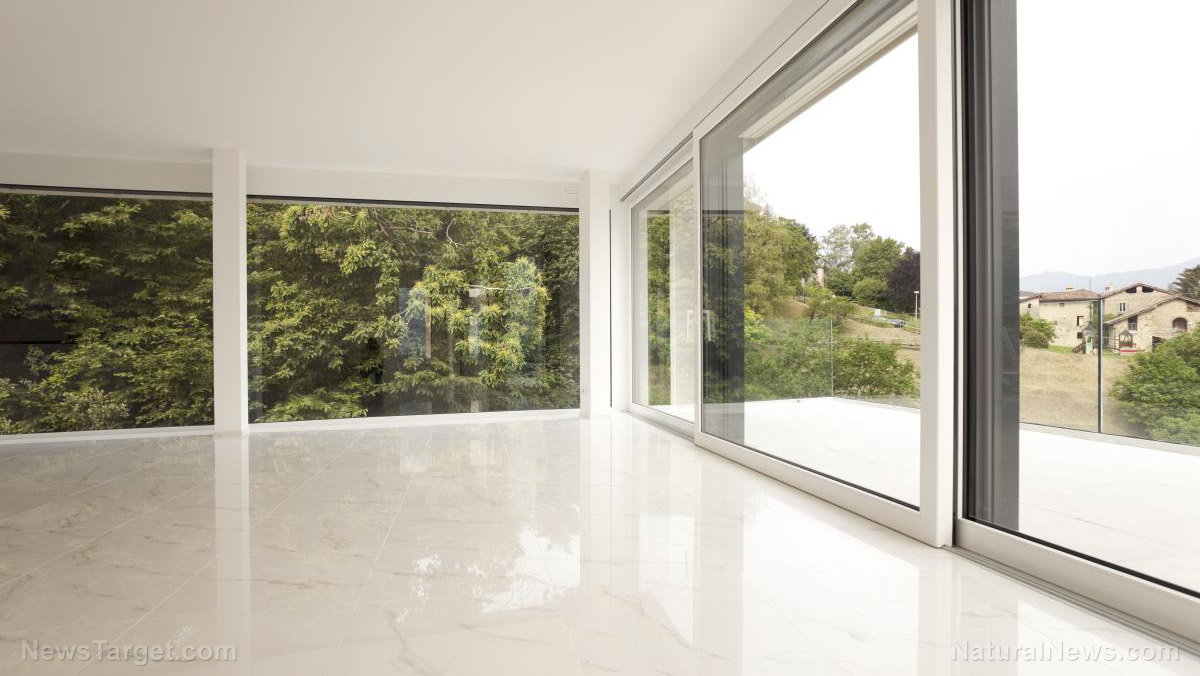
Man-made structures guzzle a lot of power to keep themselves cool, warm, well-ventilated and brightly lit at all times. Their electrical needs account for 30-40 percent of the energy usage in the entire world.
Smart windows can save significant amounts of electricity by generating electrical power or improving the insulation of the building. They will let light in and either keep heat out or in, depending on the weather.
Compared to active cooling methods like air conditioning, IR-blocking windows are passive systems that maintain temperature instead of trying to change it. Commercial models are already available and in limited use.
Like most energy-efficient technologies, smart windows cost an arm and a leg. Many models rely on silver, a fairly expensive noble metal that is particularly effective as a material. (Related: Smart contact lenses could serve as window to the future and offer Augmented Reality applications.)
Plasmonic nanocrystals enable cheaper yet efficient infrared-blocking windows
Researchers have been looking for ways to decrease the cost of IR-blocking windows. They are investigating energy-efficient materials that are cheap and environment-friendly.
One way to make smart windows more affordable is to substitute inexpensive yet effective metals for silver. A cheaper window could be more attractive to buyers, leading to the technology's wider adoption for homes and businesses.
Most IR-blocking windows are produced using nanoparticles. Some of these extremely small particles can be adjusted with the right amounts of electricity. They can increase or decrease their opacity to better regulate the amount of light and heat that they filter.
The cheaper designs are also more passive. Many of them use plasmonic nanocrystals made from certain metals to block infrared energy.
These tiny crystals can be made from aluminum, copper, gold, silver, and titanium nitride. Gold is expensive, silver strikes a rough balance between cost and efficiency, and the other materials cost less but are also not as effective.
Ohio University professor Alexander O. Govorov says that his research team sought out a passive metamaterial that could be produced through a means suited for industrial-level production. They dispensed with the common practice of applying a silver coat to one side of the smart window.
New plasmonic glass can keep heat out while letting light in
Instead, they experimented with metal nanoparticles diffused within a transparent medium. These particles rely on plasmons to achieve the required infrared-blocking effects.
Quasiparticles created by unattached electrons, plasmons enjoy a strong interaction with light. Small amounts of plasmonic nanocrystals can match the optical performance of much larger amounts of conventional materials.
These nanocrystals are fabricated in certain shapes. They are then embedded into a transparent material to create a plasmonic glass that blocks infrared while permitting sunlight to pass.
The researchers say the current methods of producing energy-efficient windows will be able to adopt their new plasmonic glass with little fuss. Their method is also not limited to blocking infrared energy; plasmonic glass can be tuned to filter out other parts of the electromagnetic spectrum.
"From my experience, it is relatively easy to design nanostructured or metastructured materials with certain superior properties, but, very often, such materials would be very expensive," Govorov says. "I guess, the challenge is to find physical principles and available materials, and fabricated with available technologies, that are both cheap and efficient."
Interested in energy-saving devices like smart windows? You can read similar articles at Inventions.news.
Sources include:
Please contact us for more information.





















